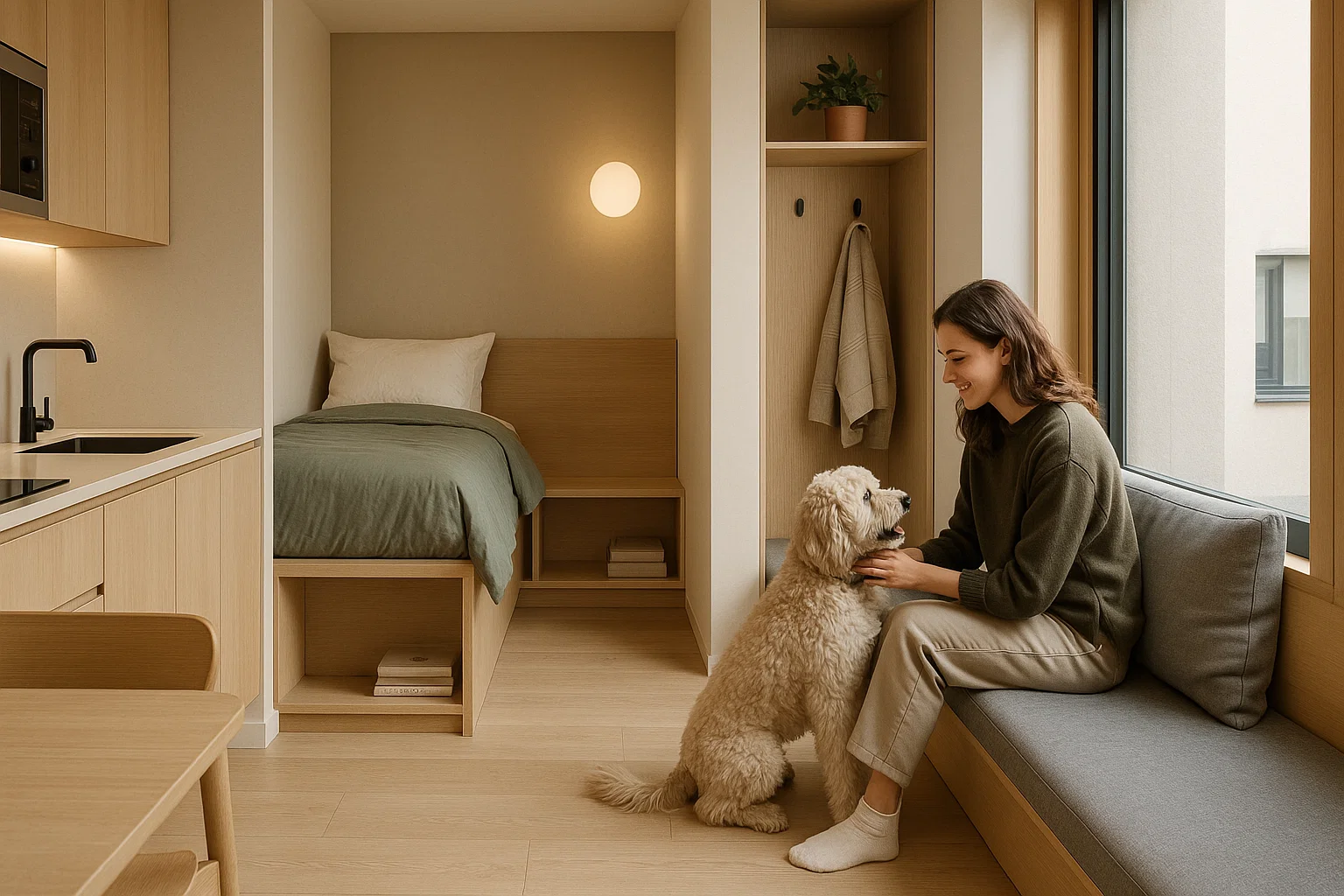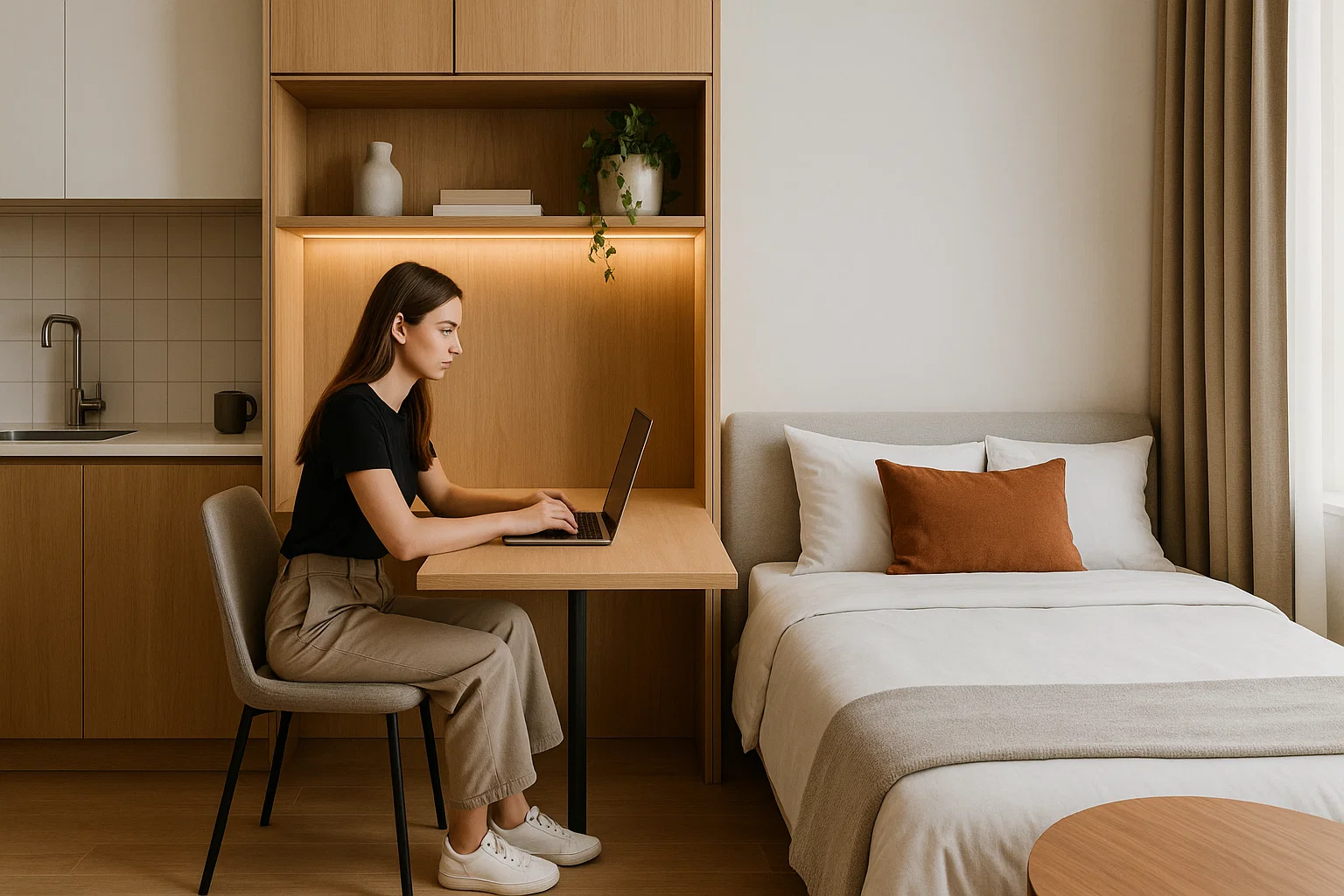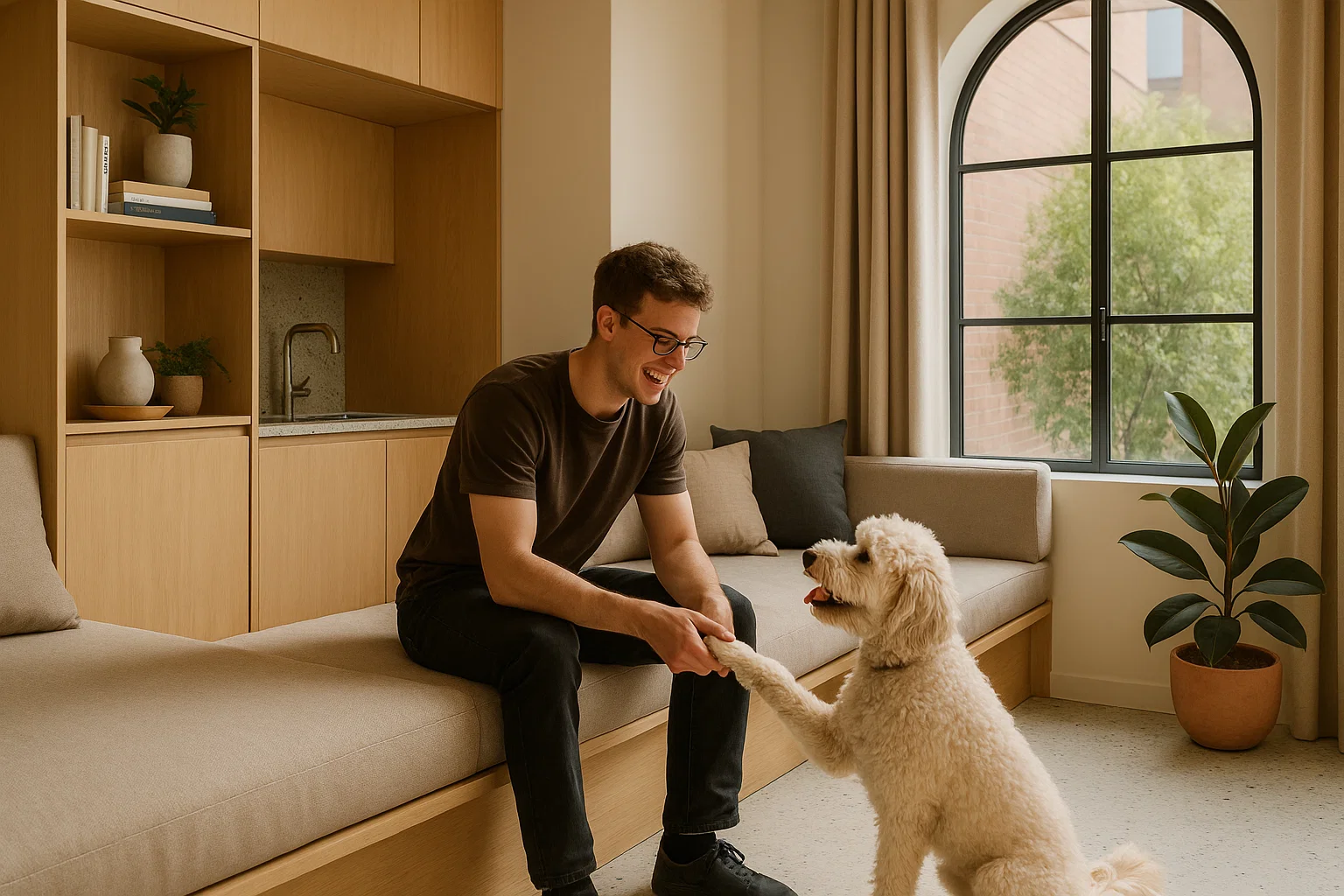
Varazze: How One Architect Cracked the Code on a Compact Italian Seaside Pad
You’re on the Mediterranean coast, just a couple of hours south of Milan, in Varazze. It’s a classic Ligurian town – historic churches, miles of sandy beaches, and a promenade that draws a serious crowd, especially in summer. Now, picture a building from the 1940s, recently renovated, sitting right on the shore with killer views of the sea. Inside, there was a bare bones, 49-square-meter (that’s about 527 square feet) studio apartment. Not exactly spacious, right?
But a client wanted this place to work for two to four people, needing both open social zones and real privacy. Enter an Italian architect, a specialist in interior and furniture design, particularly obsessed with multifunctional and flexible spaces. His vision? “To use a few defined multifunctional architecture elements with the purpose of maximizing the space.” And the result is nothing short of brilliant.
The Core Strategy: One Piece Changes Everything
The entire transformation pivots on one custom-made furniture piece. It’s not just furniture; it’s an architectural element. Placed squarely in the middle of the apartment’s entrance, this piece acts as a seamless divider, carving out the bedroom from the main living area. It integrates a ton of functions, proving how custom design can redefine what’s possible in tight quarters.
You step inside, and you’re in a generous lobby connected to a balcony with “fantastic view over the Mediterranean Sea”. But here’s the clever bit: hidden within this lobby is a multifunctional table from a company called Clay. With a rotating mechanism and a “fall-down opening system,” it tucks away to keep the space open and airy. Need to eat? Pop it open, and you’ve instantly got a functional dining room. Efficient.
Living Large in a Small Footprint
The living area itself is a masterclass in adaptable design. It feels “very cozy [and] very bright thanks to the presence of a skylight.” Two key players make this space sing:
- There’s a low-profile, white lacquered furniture unit built right into the base of the pitched roof. It’s your TV rack, it’s got storage, and yeah, it’s even got a bar. Everything you need, cleanly tucked away.
- Opposite that, a “dynamic wall” pulls off the ultimate trick. This isn’t just a wall; it packs in storage, stylish walnut bookshelves, and a genius fall-down transforming double bed. During the day, guests get a big living area. At night? A real double bed is “always ready to be used at any time” – quick and easy. Just grab a handle on the front shelf, and it pivots down, becoming a stable bed support. You don’t even need to clear anything off the shelf. That’s smart engineering.
Maximizing Every Square Inch
The apartment’s design keeps hitting you with intelligent solutions. The kitchen, for instance, is a full-height block, designed to follow the pitched roofline, and it’s fully loaded: refrigerator, hot plate, oven, dishwasher. White lacquer doors keep everything neat and tidy, concealing a ton of storage space.
Even the sleeping room, described as the “most complicated part of the apartment” because of how the two pitched roofs meet, still manages to fit a king-sized bed with storage underneath. A lower block at the end of the roof line provides more storage and a TV rack. The wardrobe? It’s integrated into the back of that central divider piece that separates the bedroom.
The bathroom, accessed via a sliding door, features “very light finishings” and benefits from both a skylight and a large mirror, both working to “enlarged the prospective space.” A built-in basin cleverly hides the washing machine underneath. Every spot utilized.
The Unsung Heroes: Light and Flow
What ties this entire project together and makes it feel bigger than its 49 square meters? Continuity and light. Bleached oak flooring runs “throughout the apartment to give continuity to the space.” The architect made smart use of indirect lighting to emphasize the architectural structure, complemented by numerous small spotlights. And for a final touch, a floor-to-ceiling mirror at the end of the corridor, perfectly placed between the bathroom and bedroom doors, further “enlarge[s] the prospective space,” making the apartment visually expand.
This project hammers home a critical point: “there is no reason to let your square meters limit both the aesthetic and the functional potential of your home.” It’s a prime example that “good design allows you to experience a small unit not as a compromise but as a lifestyle choice.” By integrating multifunctional and flexible solutions, this seaside apartment punches well above its weight, proving that good design can truly maximize a micro-unit’s potential. It’s about smart thinking, not just square footage.




